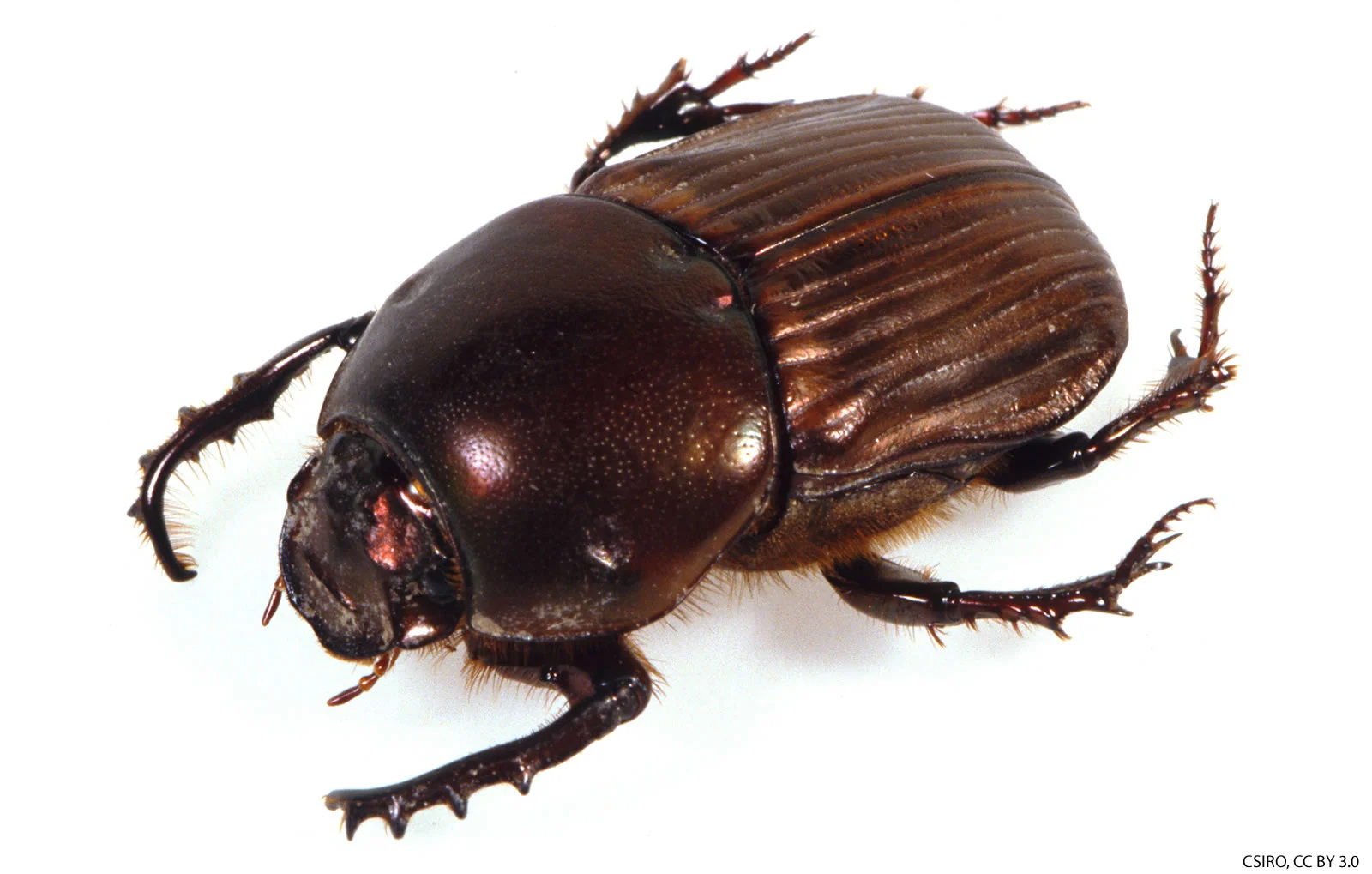You have seen them on public television nature shows and laughed at their antics as they rolled their perfectly spherical balls of dung across a patch of African plain. You may think your only chance of encountering these exotic insects is on a far away continent, but consider this: there are thousands of species of dung beetles in the world and many of them reside right here in New England. The exotic can be as close as the nearest cow patty.
Cindi Kobak
Dung beetles belong to the family Scarabaeidae, the scarab beetles. Some, like this Canthon species, are known as tumble beetles, or tumblebugs, for their habit of tumbling along, pushing and pulling a ball of dung. A pair of beetles (male and female) will work together to form a chunk of dung into a ball larger than themselves. Then they will roll the ball into a hole they have excavated in the soil. The female lays a single egg in each dung ball they create and the pair will bury them in the hole. As an egg hatches, the developing beetle larva will feed on its underground dung ball. It pupates within the dung and emerges to tunnel up to the surface as an adult beetle.
Many dung beetle species are either a dull or shiny black. Some are iridescent, while others can be quite colorful. Those in North America range in size from about one-eighth-inch to one-and-one-half inches long. The hind legs are generally placed further back on the body than what you would normally see on other beetle species. This special adaptation aids the dung beetle in forming and transporting the perfect dung ball.
The smell of fresh manure attracts dung beetles, which will fly considerable distances in search of a fresh food source. Manure of herbivores, such as cattle, horses, sheep, rabbits, camels, kangaroos, and elephants, is attractive to these beetles, though many will feed only on one particular type. For instance, when cattle and buffalo were introduced to Australia there were no dung beetles there to help consume the massive quantities of wet dung piles created by these animals. Australia does have native species of dung beetles, but they have evolved to eat the dry pellets of the native kangaroos. (One Australian genus is comically named Sisyphus for the mythological figure compelled to eternally roll a rock to the top of a hill, only to have it roll back down again.) To solve the mounting problem of ungulate droppings that covered Australia’s rangelands, dung beetles well adapted to this type of dung were introduced from Africa and Europe. Needless to say, dung beetles are considered beneficial insects that help to enrich the soil. By reducing the vast amounts of exposed dung piles, they also help to reduce fly breeding habitat.
Wall relief with the cartouche of Thutmosis III on eighth pylon, Karnak temple of Amun-Ra, Egypt. I, Rémih, CC BY-SA 3.0
Interestingly, the ancient Egyptians’ sacred scarabs were dung beetles. Just as the sun god, Ra, was believed to roll the sun across the sky each day and bury it each night, so too, the sacred scarab rolled its dung ball all day and buried it at night. Both the Egyptians and South American tribes were amazed by the emergence of an adult beetle from a dung ball and held the magical scarab beetle as a symbol of spontaneous generation and resurrection.
Cindi Kobak

